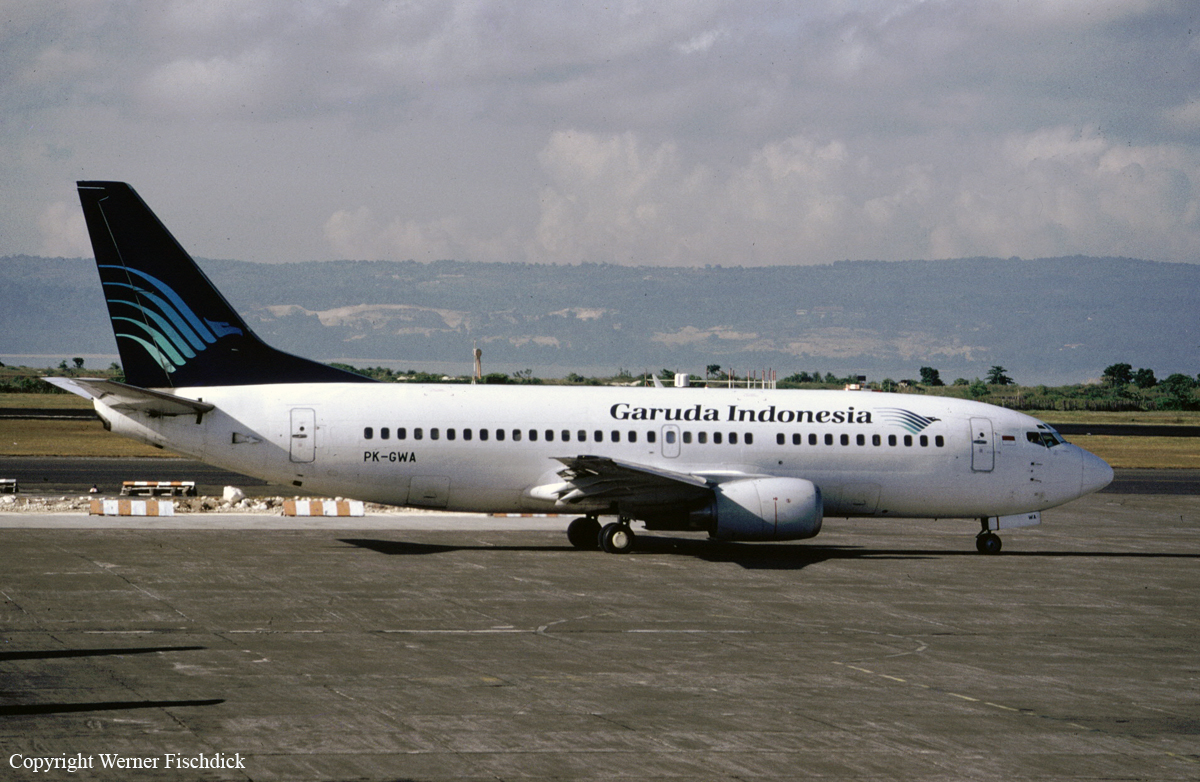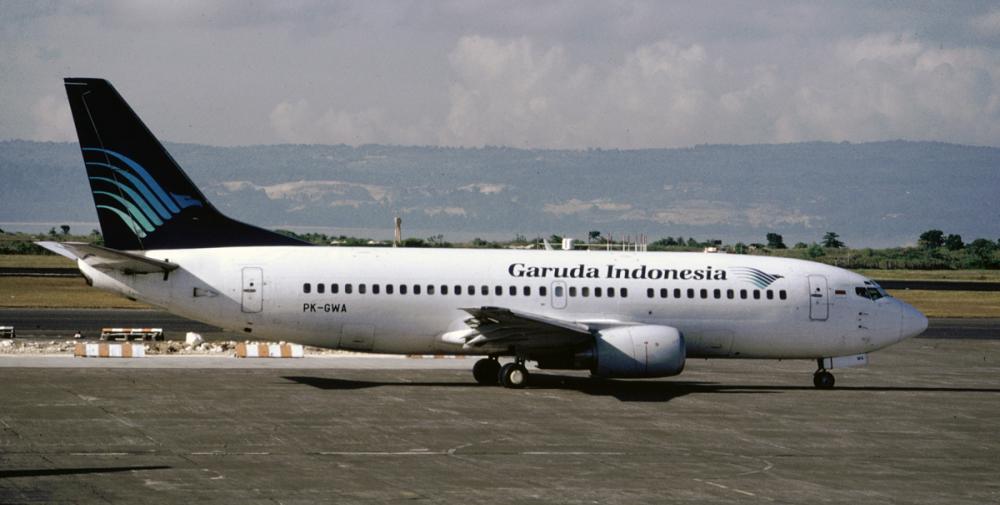Date & Time:
Jan 16, 2002 at 1200 LT
Type of aircraft:
Boeing 737-300
Registration:
PK-GWA
Flight Phase:
Landing (descent or approach)
Flight Type:
Scheduled Revenue Flight
Survivors:
Yes
Schedule:
Mataram-Jogjakarta
MSN:
24403
YOM:
1989
Flight number:
GA421
Country:
Indonesia
Region:
Asia
Crew on board:
6
Crew fatalities:
0
Pax on board:
54
Pax fatalities:
0
Other fatalities:
0
Total fatalities:
1
Aircraft flight hours:
27701
Aircraft flight cycles:
24139
Circumstances:
On January 16, 2002, at approximately 09:24 UTC, a Boeing 737-300, PK-GWA, ditched into the waters of the Bengawan Solo River, Central Java during a forced landing, following loss of power on both engines as the aircraft was descending through 19,000 ft. The dual engine flame out occurred shortly after the aircraft entered severe cumulonimbus cloud formations with turbulence and heavy rain and ice. The aircraft, owned and operated by PT Garuda Indonesia as Flight GA 421, had departed Ampenan at 08:32 UTC, on a regular scheduled commercial flight with destination Yogyakarta. At departure VMC conditions prevailed. The flight from Ampenan was reported uneventful until its arrival in the Yogyakarta area. The crew stated that they observed cumulonimbus cloud formations on their weather radar. The aircraft descended from cruise altitude of 31,000 ft to 28,000ft as instructed by BALI ATC at 09.08 UTC due to traffic on eastbound at FL290. As they began their descent from FL 280 at 09.13 UTC, prior to entering the clouds at 23,000 feet, the crew noted at the radar screen red cells with two green and yellow areas to the left and right of their intended flight path. The Pilot Flying decided to take the left opening above PURWO NDB. The flight crew prepared to enter turbulence by setting turbulence speed at 280 knots, seatbelt on, engine ignitions on FLT and anti-ice on. Then the Pilot Flying requested to BALI ATC to descend to FL 190 and was cleared by Semarang APP at 09.13 UTC. Shortly after the aircraft entered the area covered by Cumulonimbus cells, the crew noted severe turbulence and heavy precipitation. According to the flight crew interview, the crew noted aircraft electrical power generators loss and they were only having primary engine instrument indications and captain flight instruments, which finally identified both engines flame-out. While in the precipitation, the flight crew attempted at least two engine relights, and one attempt of APU start. As the APU start was initiated, the crew noted total electrical loss of the aircraft. The aircraft descended into VMC conditions at about 8,000 ft altitude. The PIC spotted the Bengawan Solo River and decided to land the aircraft on the river. The crew announced to the flight attendant to prepare emergency landing procedure. The aircraft landed successfully between two iron bridges in the upstream direction, and came to a stop with its nose pointing to the right of the landing path. The aircraft settled down on its belly, with the wings and control surfaces largely intact, and was partially submerged. The evacuation following the landing was successful. Twelve passengers suffered injuries, the flight crew and two flight attendants were uninjured, one flight attendant suffered serious injuries, and another flight attendant was found in the waters of the river and fatally injured.
Probable cause:
The NTSC determines that the probable causes of the accident were the combination of:
1) The aircraft had entered severe hail and rain during weather avoidance which subsequently caused both engines flame out;
2) Two attempts of engine-relight failed because the aircraft was still in the precipitation beyond the engines’ certified capabilities; and
3) During the second attempt relight, the aircraft suffered run-out electrical power.
1) The aircraft had entered severe hail and rain during weather avoidance which subsequently caused both engines flame out;
2) Two attempts of engine-relight failed because the aircraft was still in the precipitation beyond the engines’ certified capabilities; and
3) During the second attempt relight, the aircraft suffered run-out electrical power.
Final Report:
PK-GWA.pdf1.18 MB


